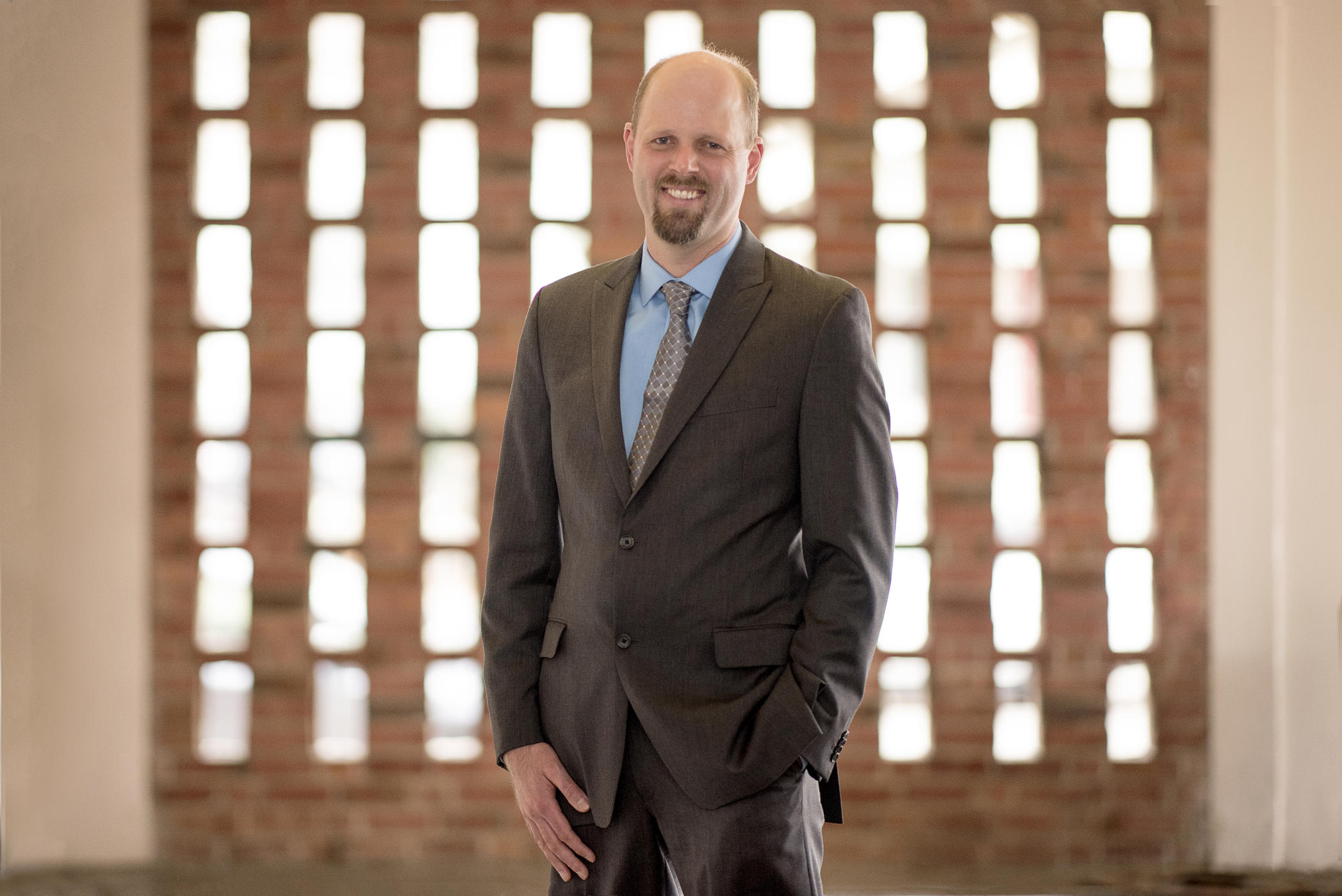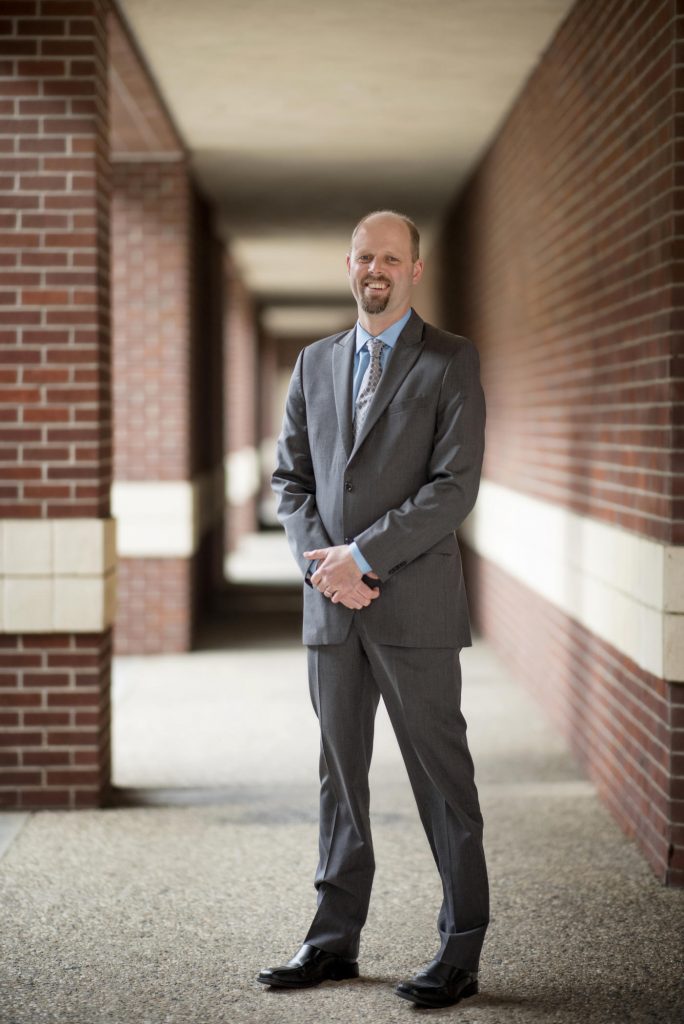The Quest for Sounder Structures

Civil engineering professor wants buildings to withstand large-scale earthquakes
Curt Haselton can’t wait for “the big one.”
In the civil engineering professor’s entire life on the West Coast, he’s never experienced an earthquake stronger than one that might shake the clothes in his closet. Now that his academic life and professional life revolve around seismic software, he’s eager to feel some tremendous tremors firsthand.
“If you do structural engineering on the West Coast, you’d better be interested in earthquakes,” he said. “I joke that if you design a building for earthquakes, you can design for anything else.”
Yet, he doesn’t think modern designs go far enough.
“The basic philosophy of every new building at ground zero is you make the building not collapse and kill people. But you don’t address the potential damage and the cost to repair the damage,” Haselton said.
Per current building standards, it’s acceptable if a building has to be demolished after a major quake. But that does nothing to protect assets, businesses, or societal function, he explained.
“If everyone can get out of a building alive but they have to live on the streets for the next two years, that’s not a real concern of the building code. That gives us a Hurricane Katrina situation.”
A better approach is the basic premise behind Seismic Performance Prediction (SP3), a start-up venture Haselton cofounded with Stanford University professor Jack Baker in 2014. Funding from the National Science Foundation supports the commercialization of their research.
Their objective has been to create software that enables engineers to quickly obtain a comprehensive prediction of building damage that could occur due to seismic activity. The application produces hundreds of thousands of simulations in minutes and aggregates the results to support efficient decision-making to drive better design.
“It’s less difficult than people think it is,” he said. “It’s just checking a few more things and taking a comprehensive approach.”
Students have been a major help in getting SP3 off the ground, Haselton said. After completing their master’s degrees, Dustin Cook (BS, Civil Engineering, ’12) and Katie Fitzgerald (BS, Civil Engineering, ’13), who helped him with research as undergrads, have returned to work as professional engineers for him in SP3’s Chico office, alongside three full-time programmers.
“People often get a big-name school for their undergrad,” he said. “The contrast is Chico State, where you can get a solid education, cheaper, and be taught by a PhD instead of a teacher’s assistant.”
Such teachers not only have time to answer their students’ questions, but they can expose them directly to research and push them with greater challenges because they have the time to help them through it, he said.

Haselton speaks from experience. After graduating from Chico State in 2002, he went on to Stanford for graduate school, where he met Baker. After getting his PhD in 2006, he began teaching civil engineering at Chico State the following spring, which he says was like “returning home.”
He’s since served five years as department chair and shared his passion for engineering with hundreds of students. In 2012, the idea for the commercialization project came up and he embraced it. In fall 2016, he returned from a one-year sabbatical and is working half-time so he can continue to run SP3.
His SP3’s software looks at the time and cost to repair a structure and uses it to meet those goals. The business has 25 early adopter clients, with commercial uses in New Zealand and Ecuador, and academic applications in China and London. The program is also being taught in graduate classes at UC Berkeley, Stanford, Seattle University, and University of Colorado, Boulder.
SP3 is currently working with a company in California to design the Long Beach City Hall, Port Authority and Council Chambers buildings that include two towers topping 11 stories, with construction soon expected to begin. The goal is for the structures to be reopened and available for regular operations within two weeks of experiencing a significant earthquake. The alternative, per current standards, is more like four to 12 months.
Haselton believes it’s not a matter of “if” but “when” the next major quake hits. With current building codes, countless structures would be left nonfunctional and could not recover for years, if not decades.
It’s just as critical to minimize damage in an academic setting as it is a commercial or residential enterprise. While Chico State is far from a major fault line, there are other campuses within the CSU and other universities that are at a much larger risk. The potential is such that a major quake could cause such damage that they would not be safe for occupation in the immediate future, impacting the employment of faculty and staff, shuttering residential living for students who live on campus, and potentially delaying the education of countless.
The limitations and implications of the building code is as much a part of Haselton’s lectures to his students as a lesson on the code itself. And this spring, they’ll use SP3 as part of their design project to pursue solutions.
“People don’t know until you tell them,” he said. “You wouldn’t think that is how it is . . . It’s so we don’t live in bunkers and it’s more cost effective to build, but we are essentially building disposable buildings.”
For more details, visit www.hbrisk.com/about/sp3.


